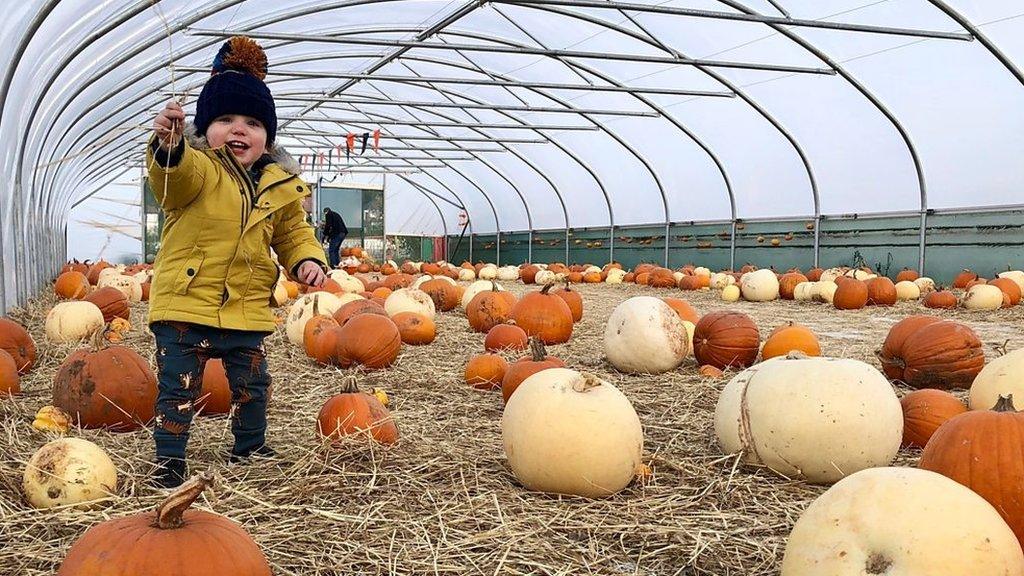Halloween costumes - from turnips to sexy witches
- Published
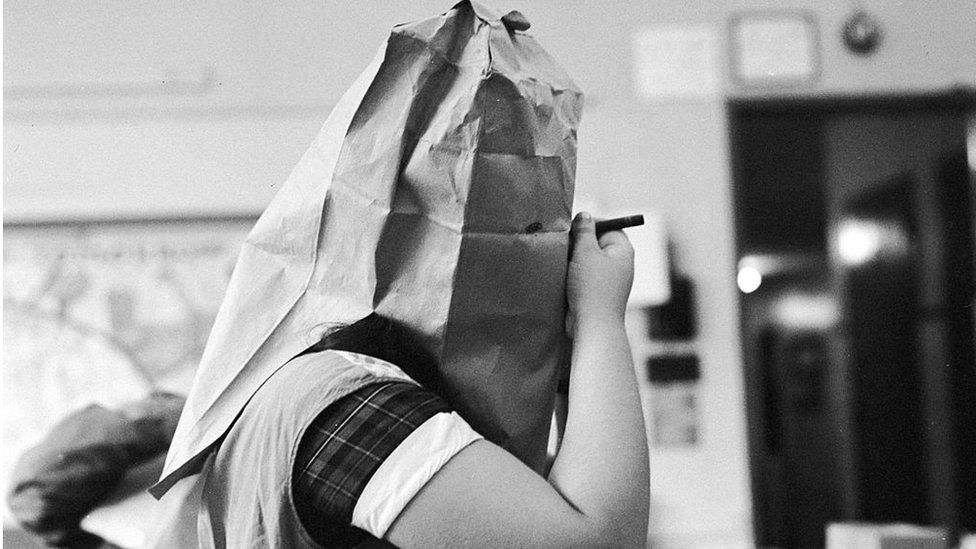
In the 1950s all you needed to make a Halloween costume was a paper bag and a crayon
Turnip lanterns, witches' hats and masks - people of a certain age remember a very different Halloween from the one enjoyed by children today.
Dressing up has been a big part of the festival for hundreds of years from the days when people went "guising" to collect money for feasting to the most outrageous 21st century party costumes and make-up.
Up to the 1980s, Halloween in Ireland and Scotland meant bobbing for apples and scoffing nuts rather than the American tradition of trick-or-treating.
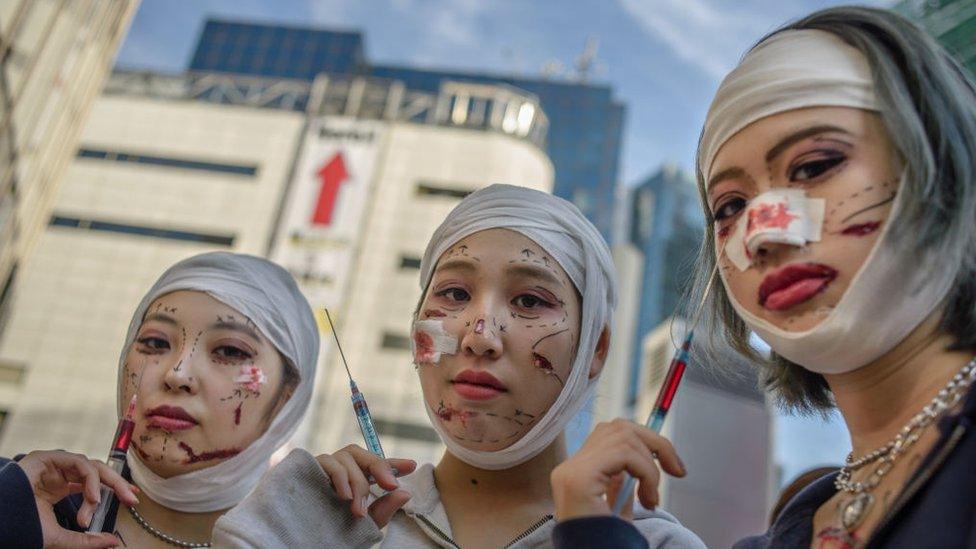
Halloween has travelled a long way from the Celtic festival of Samhain to this street party in Tokyo, Japan
As far as dressing up was concerned, kids dressed in witches' hats and broomsticks and that was pretty much it.
The "pumpkinisation" of Halloween in recent decades has seen the orange North American squash become the primary symbol of the festival while trick-or-treating has provided more scope for dressing up.
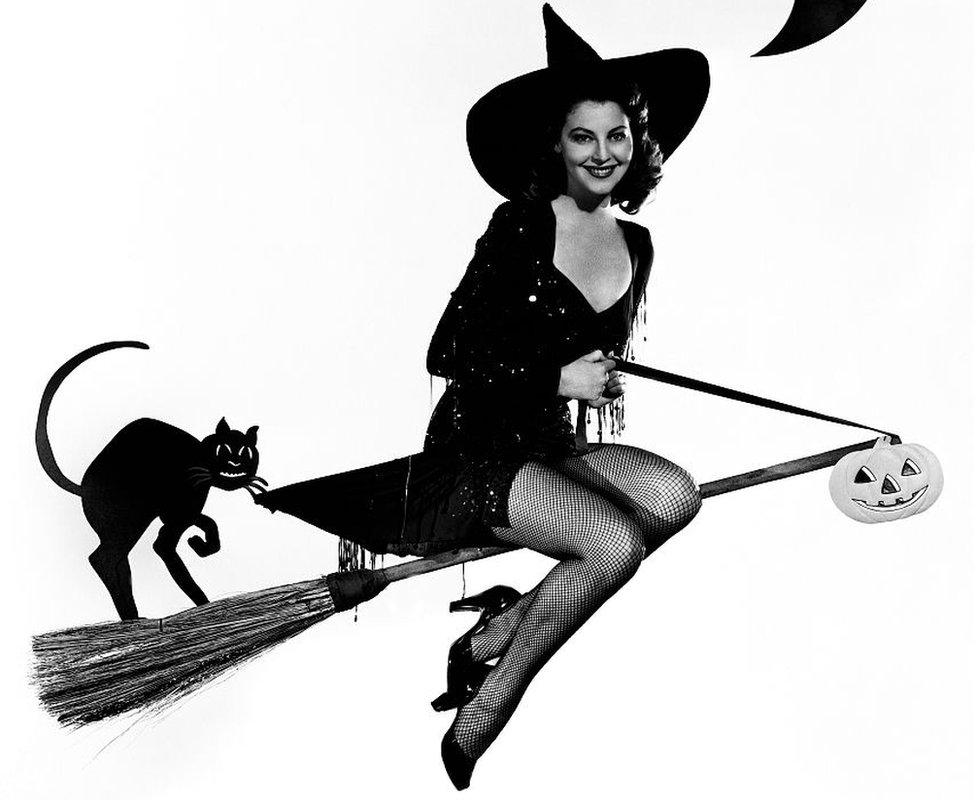
The film star Ava Gardner as a sexy witch - a popular subject for Hollywood publicity shots
With its connections back to pre-Christian folklore, Halloween has more ancient traditions than most other annual festivals.
Dr Andrew Sneddon of Ulster University is an expert on witchcraft in Ireland.
He explained that Halloween had undergone many changes since the original Celtic festival of Samhain, which marked the end of the harvest season and was not connected to the dead.
One of the first mentions of a Halloween costume came in the 12th century when Henry II of England dressed in black and purple - the colours of the dead.
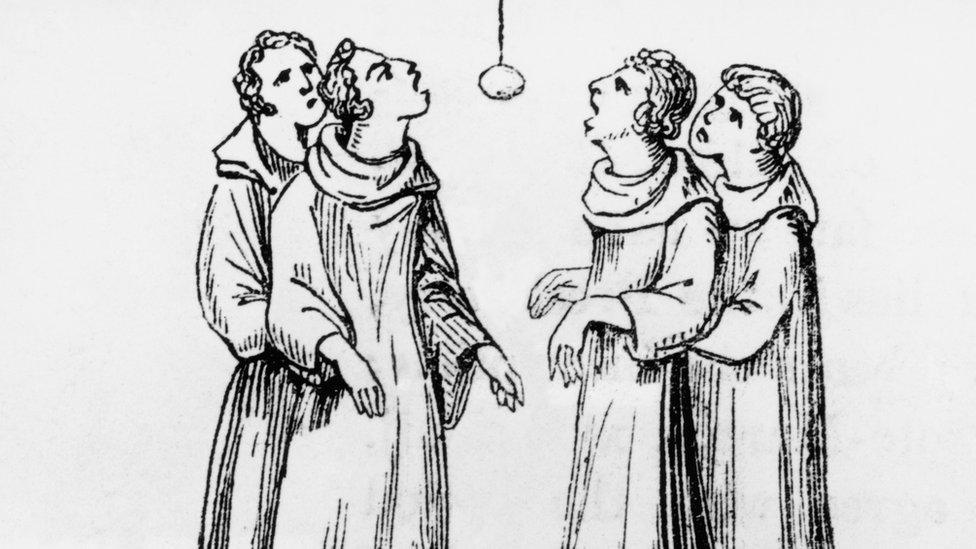
A game of bob apple in the 16th century. Dressing up for Halloween is a relatively recent tradition
It wasn't until the major emigration of the Irish to North America that Halloween crossed the Atlantic for the first time.
"In the twentieth century it exploded in size and Halloween in America became centred on fancy dress," Dr Sneddon explained.
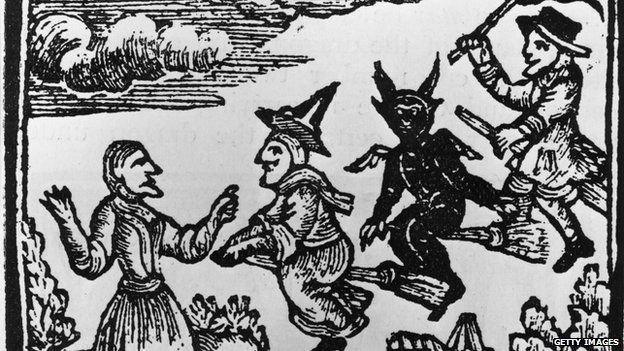
The modern image of friendly, or comic witches originates in witch hunts that left thousands dead
American culture made witches more cartoon-like, in films and the 1960s TV series Bewitched, but, as the academic explained, "the image is rooted in witch hunts that cost 50,000 lives".
Dressing up for Halloween parties is now as popular for adults as it has always been for children

Lily Durkan shows off a crafty costume at the Stitch a Witch workshop in Derry
Joe Brolly runs the Stitch a Witch workshop in Londonderry.
In a week when it was reported that shop-bought Halloween costumes could contain the same amount of plastic as over 80m plastic bottles the event pointed to a possible alternative that learns from the past
"It encourages the reuse of old clothes and materials to make Halloween costumes and passing on old skills," he said.
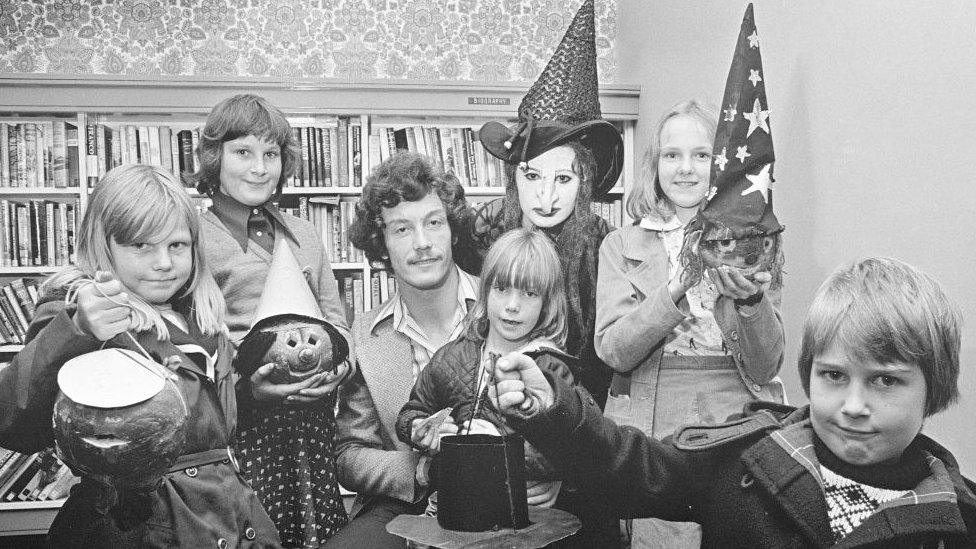
Witches' hats and turnip lanterns - children celebrate Halloween in the pre-pumpkin era
Derry was once a city based on the shirtmaking industry but the old skills of stitching and crafting are dying out.
"It's getting it back to the old ways of of making your own costume," Mr Brolly said.
Research from the charities Hubbub and the Fairyland Trust looked at over 300 clothing lines sold by 19 different retailers.
They concluded that 83% of the material found in costumes on sale contain oil-based plastic like polyester.
Other research by Hubbub has estimated that 33m people dressed up for Halloween in 2017.

Londonderry's Halloween festival is said to be the biggest in Europe
Derry's Halloween Festival is said to be the biggest in Europe. There are dozens of events from scary pizza-making to a fancy dress dog walk and Japanese ghost stories.
It culminates in a carnival parade on Halloween night that epitomises the current state of the festival's dressing-up culture as a piece of unthreatening "ghoulish" fun.
Last year, the council said that 100,000 people visited the city as the city's walls came alive with skeletons, nuns, witches, fire and music.
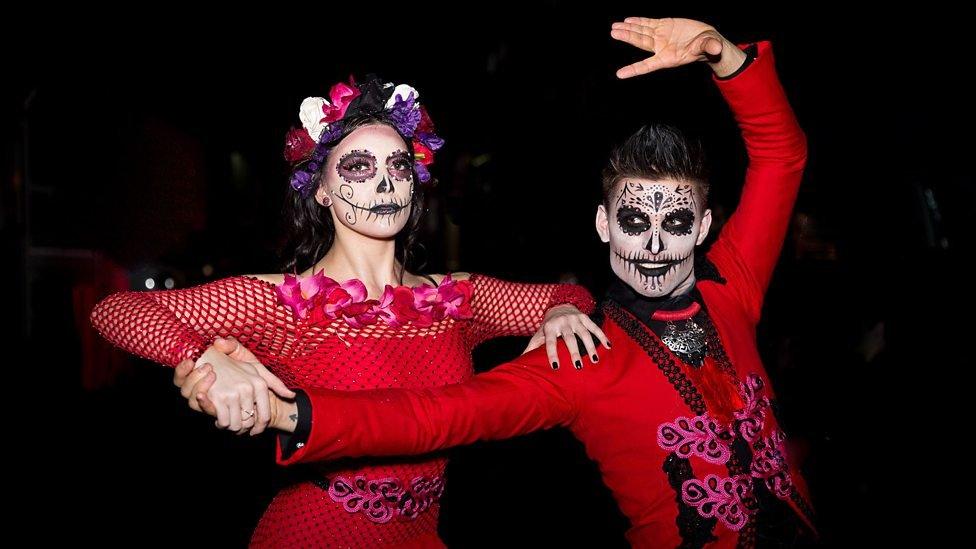
A Day of the Dead routine on Strictly Come Dancing. The BBC1 programme's Halloween edition has become a fixture on the autumn TV schedule
In recent years, the colourful costumes and distinctive skull makeup associated with the Mexican Day of the Dead have proved irresistible to Halloween revellers seeking a scary look.
The festival is held at a similar time to Halloween but has different roots and meaning. It has its origins prior to Spanish colonisation and is a celebration of the lives of family and friends who have died.
However, people wearing Day of the Dead costumes have been accused of cultural appropriation - the inappropriate adoption of one culture's customs by another.
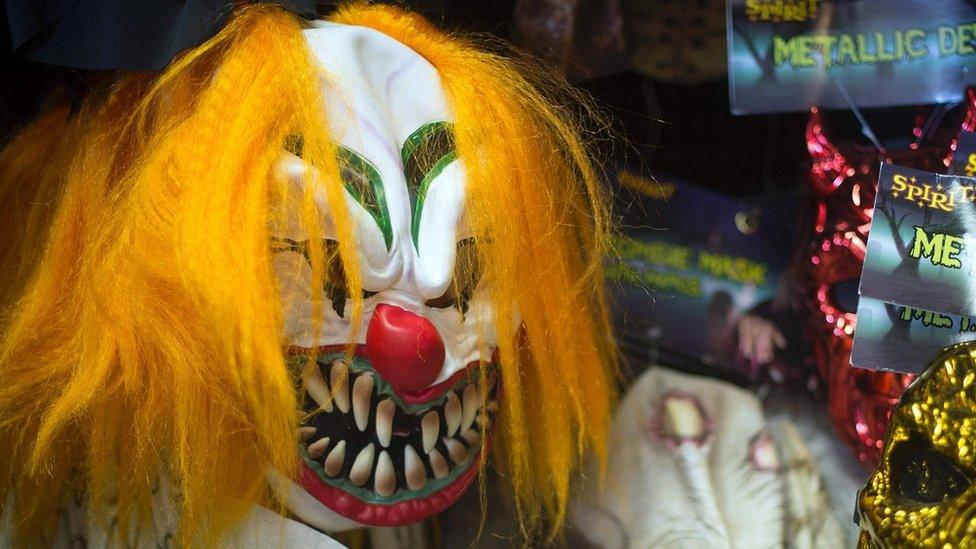
People wearing killer clown masks caused a public nuisance in many towns across the UK in 2016
In the autumn of 2016, a "Killer Clown" craze spread across the United States and the UK. People dressed in horror clown masks were seen lurking in public spaces or even chasing people down the street with plastic axes or machetes.
Police across England were called to dozens of clown incidents. In the weeks running up to Halloween, Thames Valley Police said it was called to 14 threatening Killer Clown incidents in 24 hours.
Evil, eerie clowns entered popular culture through the likes of Pennywise, a character in the 1990 TV series "IT", before their adoption by Halloween partygoers.
Fancy dress
Peter Irvine is unimpressed by conventional Halloween costumes. For him "dressing up" goes far beyond the realms of witches's hats or Hollywood films.
His interest in dressing up for Halloween goes back to his childhood when his artistic-minded mother would run up costumes for him on her sewing machine.
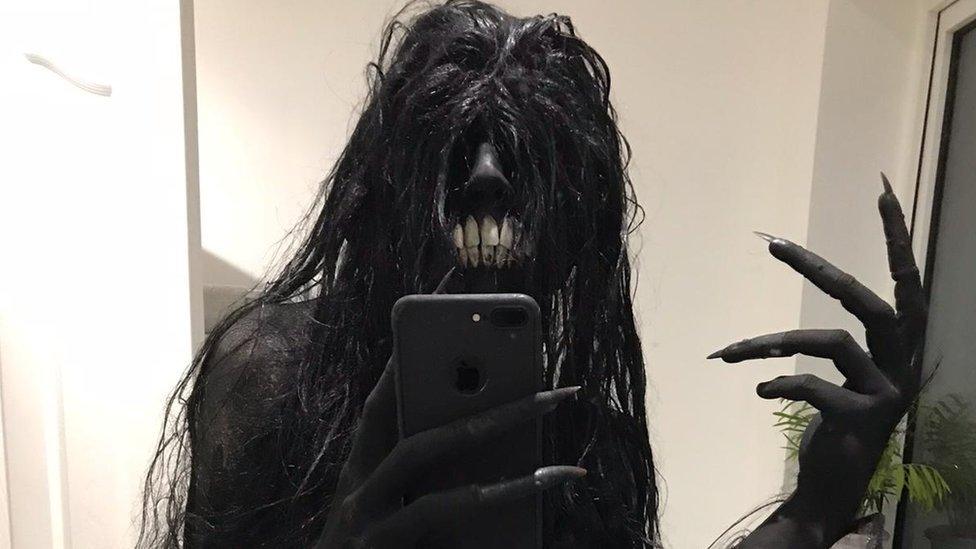
A hairy selfie - Peter Irvine's mother used to run him off a costume on her sewing machine
Peter studied Art and Design at the University of Ulster. "As a student we'd have a fancy dress party once a month," he said.
"Every year I want to be dark and make people unnerved - to be something that can't be quite explained or understood," he says.
Peter's art relies on his remarkable talent for makeup and his designs are partly inspired by the Halloween costumes of the past.
If you want to see his outlandish costume for Halloween 2019 you'll just have to wait - for the moment it's strictly under wraps.
- Published18 October 2019

- Published9 July 2019
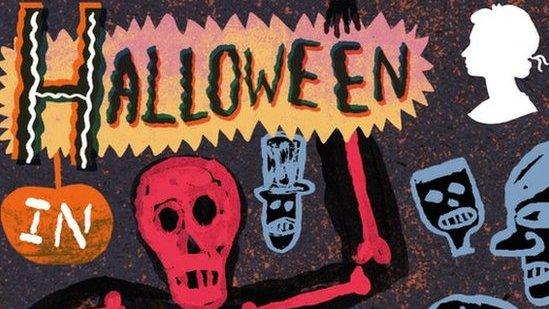
- Published30 October 2018
